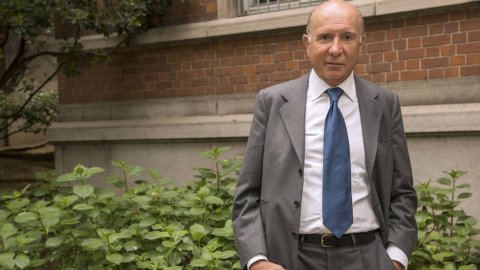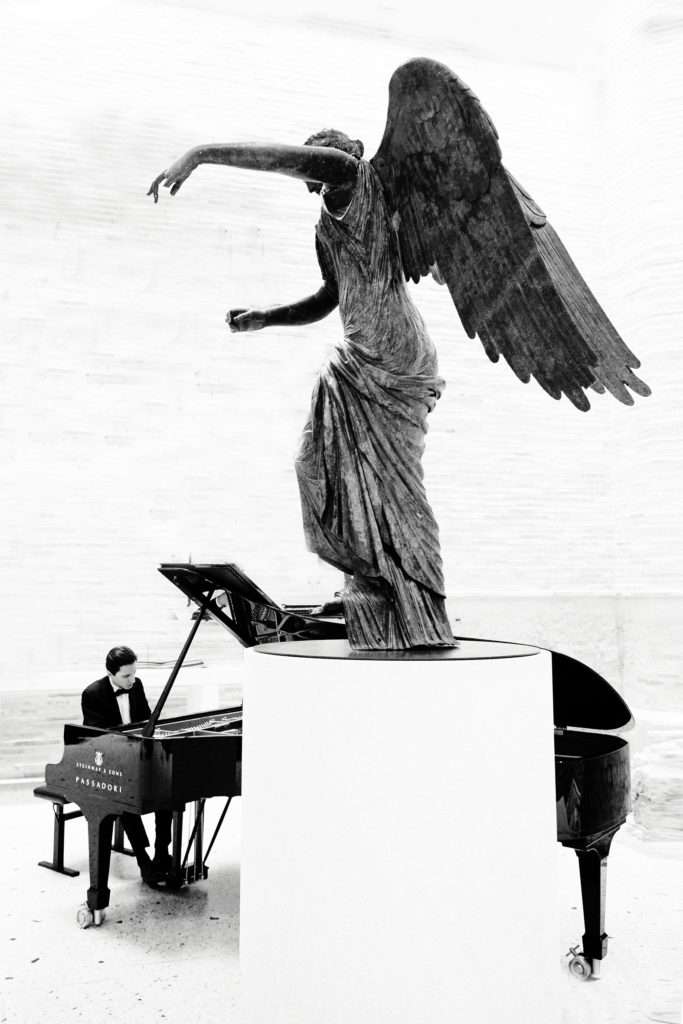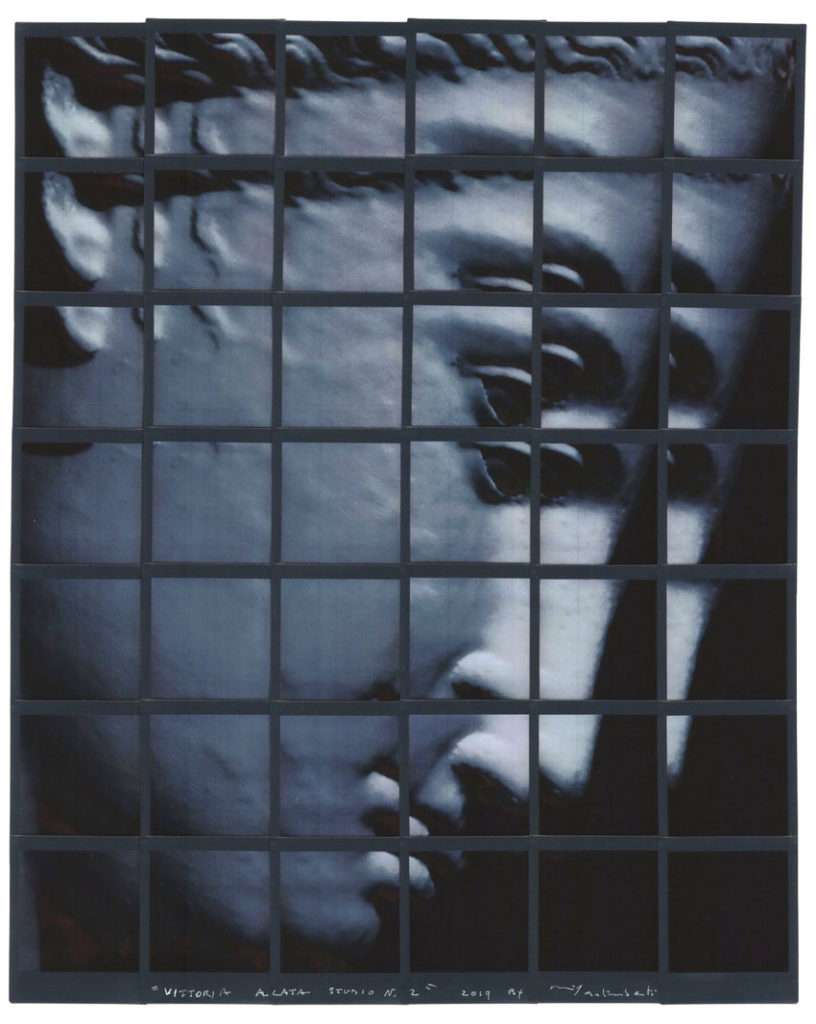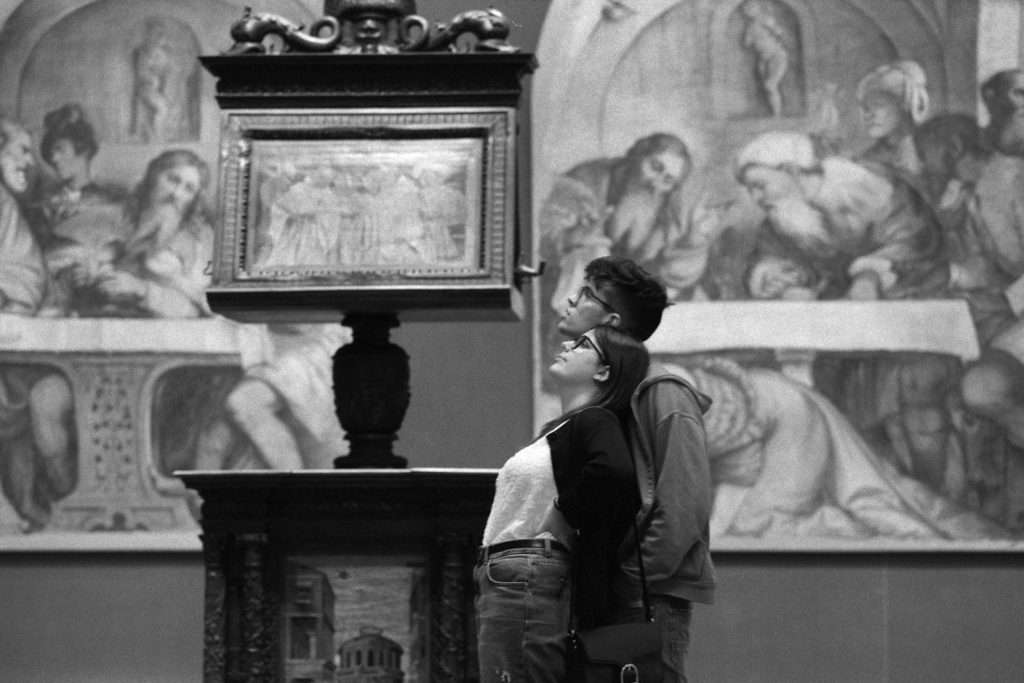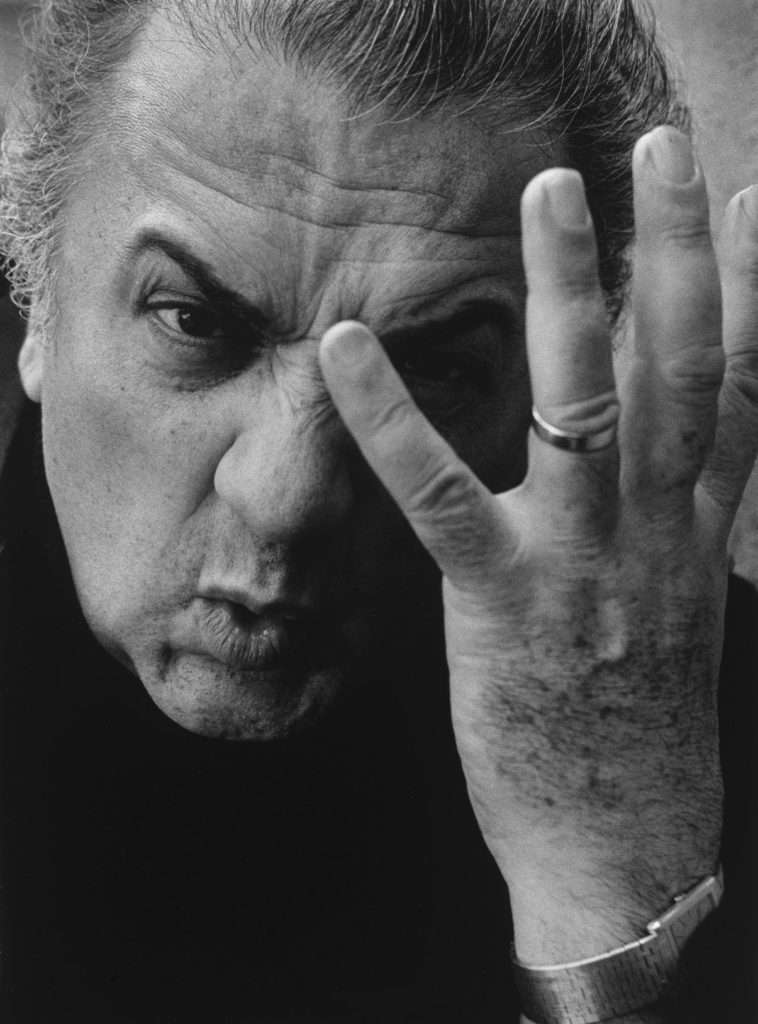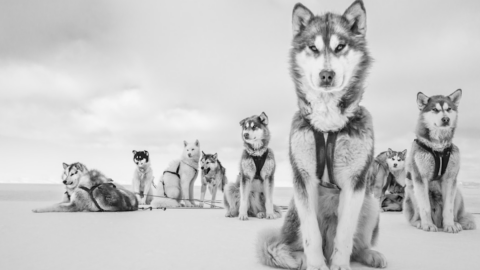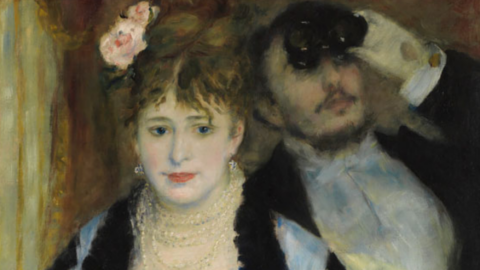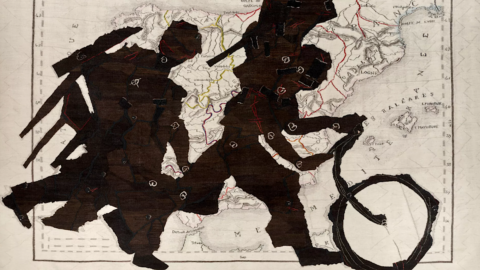The initiative, with the artistic curatorship of Renato Corsini, is promoted by Municipality of Brescia and Brescia Museums Foundation with the collaboration of MaCof – Center of Italian photography.
This year's theme, Heritage, is connected to the celebrations for the return to Brescia of the Winged Victory, one of the most extraordinary bronze statues of the Roman era, spokesperson for the cultural and identity value of the city's heritage, after two years of restoration by the Opificio delle Pietre Dure in Florence.
The new location of the statue in the eastern hall of the Capitolium, in a museum setting designed by the Spanish architect Juan Navarro Baldeweg, enhances the entire archaeological area Brixia - Archaeological Park of Roman Brescia, in the anniversary of the tenth anniversary of the Unesco recognition of the site “Longobardi in Italia. The Places of Power” and a prelude to the cultural journey that, in 2023, it will consecrate Brescia as the Italian capital of culture with Bergamo.
The Brescia Photo Festival, started by Brescia Musei Foundation, chaired by Francesca Bazoli and directed by Stefano Karadjov, will have its fulcrum in the Museum of Santa Giulia, and will spread with important exhibitions in various city locations, such as the "Luigi Marzoli" Weapons Museum, MOCHA, the Contemporary space, Civic Museum of Natural History, Bunkervik, Poliambulanza Foundation of Brescia, Art gallery of the city and the province, starring some of the most important masters of photography, from Gianni Berengo Gardin to Ferdinando Scianna, from Francesco Cito to Franco Fontana, from Elio Ciol to Donata Pizzi, and many others, who will interpret with the photographic medium the cultural, archaeological, historical and social value of identity heritages, from Roman antiquity to the contemporary.
Francesca Bazoli, president of the Brescia Musei Foundation comments: “in this fourth edition, the Brescia Photo Festival 2021 acquires an emblematic dimension with respect to the strategic planning of the Brescia Museums Foundation and the path that we have set since 2019, with reference to the large program dedicated to archeology and the re-semanticization of archaeological heritage in a contemporary form . Furthermore, in this case, the anniversary of the tenth Unesco anniversary for our Brescia Longobarda site which falls on June 25, precisely during the Brescia Photo Festival, allows us to recall with the theme of "heritage" the great encyclopaedic heritage of a city extraordinary like Brescia in which the Municipality and the Foundation are reinterpreting the historical and artistic asset and the monumental heritage in the name of modernity".
The inaugural weekend of 26 – 28 March 2021 will be characterized by appointments and meetings with photographers.
Stefano Karadjov, director of the Brescia Musei Foundationhe observes: “Let's start again in Brescia after the break caused by the epidemic which in 2020 prevented the realization of what is now a long-awaited event by the world of Italian photography. An event dedicated to the concept of heritage and to the use that photography as a great twentieth-century medium has made of the archaeological, monumental and artistic testimonies of the past and of the naturalistic and landscape dimension of our ecosystems. An event strongly integrated with the Vittoria Alata Brescia 2020 schedule with which the city of Brescia, also with the Photo Festival, intends to launch a new contemporary identity that is alive and creative in terms of design for the great legacies of the past that abound in our country and which the archaeological area of Roman Brescia, recently redeveloped, is a national emblem”.
THE EXHIBITIONS
The ideal beginning of Grand Tour between the venues of the Brescia Photo Festival starts from Museum of Santa Giulia, in the renewed exhibition spaces of the "Renaissance Quadrilateral" of the upper galleries of the Monastery of Santa Giulia, the subject of a recent functional recovery financed by a tender from the Lombardy Region with the "Off\On" project, which has allowed Brescia to be enriched with a unique monumental and patrimonial space, perhaps the largest and full spent on temporary exhibitions owned by a public city museum.
The most eagerly awaited event of this edition is held in these entirely renovated rooms, Alfred Seiland. IMPERIVM ROMANVM. Photographs 2005-2020, first Italian retrospective by the Austrian photographer, (St. Michael, Austria, 1952), who arrives in Italy after the success of the exhibitions at the Roman Germanic Museum in Cologne, at the Rencontres in Arles and at the Albertina in Vienna.
The exhibition, curated by Filippo Maggia and Francesca Morandini, organized by the Brescia Museums Foundation and the Municipality of Brescia, co-produced by Skira, presents for the first time in Italy 136 images large format, the result of fifteen years of work that Alfred Seiland has created around the mythical places of the Roman world, reinterpreted in a surprising and unexpected way.
Central part of the selection is a nucleus of 20 unpublished works including a portfolio of 6 shots taken in Brescia between 2019 and 2020, which captures the ancient heritage of the city and documents its monumental and social value, in constant change according to contemporary canons, accompanied by an in-depth video interview.
In fact, fascinated by the cinematographic sets of ancient Rome, set up in Cinecittà, Alfred Seiland undertook a long journey through the territories where Rome's dominion extended, from Syria to Scotland and beyond, to photograph the buildings built by the Romans and capture the different nuances of interaction between man and ruins.
The exhibition stands as an ideal bridge between the historical heritage and the current gaze in line with the identity of the multi-year project dedicated to the celebration and enhancement of the Winged Victory.
40 countries told by their archaeological sites such as Palmyra, Samaria or Epidaurus. The project illustrates, with photographs that are sometimes hyper-realistic and pop, sometimes symbolist and minimal, the inextricable and vital relationship between the residual traces of Roman culture and the places of modernity. The ruins thus emerge clearly as a common heritage of a collective imagination, a sort of lowest common denominatorand continental between the past, modern art and contemporary architecture, the first "form" of globalization of the gaze. The public is invited to discover the transformations of the cities and the landscape: the photographer's eye enhances the sometimes conscious sometimes casual reuse, and exhibits the surreal dialogue between the ancient monumental glories and modern urban fabrics, the spaces of mass tourism, sport and leisure culture.
The Colosseum in Rome, the baths of Bath, the Pont du Gard in Provence, but also the ruins of sites less known to the general public, a reference for small communities or totally misrepresented territories or, again, modern hyper-realistic buildings that allude to the ancient their paradox, like the Cinecittà set for an English fiction set in ancient Rome or a hotel in Las Vegas or the discreet presence of archaeological remains in the current urban fabric. The monuments of the Roman Empire, widespread in Europe and along the Mediterranean basin, constitute a visual habit for its inhabitants, a fetish for tourists, an obstacle for infrastructures.
The exhibition is accompanied by a bilingual catalog published by Skira.
The exhibition itinerary at the Santa Giulia Museum continues with Palmyra. A denied memory, edited by Renato Corsini, the reportage of the Friulian photographer Elio Ciol, composed of 20 shots, made in 2015 in Syria before the destruction inflicted by ISIS on one of the most precious treasures of humanity. The exhibition is accompanied by an architectural and urban focus curated by Alberto Ferlenga, rector of the IUAV in Venice and full professor of architectural design, dedicated to the first pictorial representation of Palmyra in 1691, the monumental View of Palmyra by the Dutch painter Hofstede van Hessen, kept at the Allard Pierson Museum in Amsterdam.
Donata Pizzi, with Rome in Africa: a photographic journey, edited by Renato Corsini, tells through 29 fotografie le suggestions of the ancient cities of North Africa, between deserts and Roman ruins. The journey took the artist from Cyrene in Libya, through Timgad and Djemila in the Kabylia region, Tipasa along the Algerian coast, Dougga, Thuburbo Maius, Sbeitla and the great coliseum of El Djem in Tunisia, and again to Sabratha and Leptis Magna . To translate that light, those immense distances into an intimate image, Donata Pizzi attempted to reduce the photographic medium to a minimum, using a small panoramic camera, with a simple standard lens, as if looking through the slit of the Tuareg turban
Eros, curated by Clelia Belgrado, presents 25 photographs ofsculptures that the artist reggiano Bruno Cattani he shot inside museums, revealing the unedited side of classic works.
"Eros collects the years of passionate investigations and fascinating paths in the universe of sculpture, in which the author has been able to intercept and shape those dark and hidden aspects of desire, which finally reveal themselves, thanks to a gaze capable of grasping instincts and impulses, [ …] in figures with a strong visual impact, such as vigorous bodies, endowed with profound vitality.” (Benedetta Donato, 2019)
As an ideal conclusion to the IV edition of the Brescia Photo Festival, in mid-July, will be presented at the Santa Giulia Museum the restoration of the blow-up (cm 300×250) reproducing the facade of the Church of the Miracles of Brescia, created by the photographer from Brescia James Rossettithrough the juxtaposition of numerous albumen prints.
Awarded at the Vienna Industrial Exhibition of 1873, Rossetti's work was purchased by the Municipality of Brescia in 1903 and is part of the collection of the Photographic Archive of the Civic Museums of Art and History, established in parallel with the development of the museum collections and endowed with its own registers starting from 1935.
The restoration is made possible by the contribution of the tender Photography Strategy 2020 of Directorate General for Contemporary Creativity (DGCC) of the Mibact.
The widespread itinerary in the city of the IV Brescia Photo Festival continues at the "Luigi Marzoli" Museum of Arms, in the Castle of Brescia hosting the exhibition Centurion life, edited by Renato Corsini, who in 36 fotografie scene and backstage as well as 6 original posters documents the myths, legends, adventures and vicissitudes of the heroes of the peplum, one of the most prolific genres of Italian cinema, recounting the invention of centurions and gladiators in post-war films and reviewing the myth of the Roman soldier in an often ironic and irreverent way.
The MO.CA – Center for New Cultures hosts two reviews: the first, The places of culture, curated by Renato Corsini and Carolina Zani, presents the images of the French photographer Thibaud Poirier taken inside the main European, historical and contemporary libraries, who paint “a surreal and timeless portrait of these artistic monuments”.
The second exhibit, It's Brescia, curated by Renato Corsini, presents seven great Italian photographers – Gianni Berengo Gardin, Francesco Cito, Franco Fontana, Gianni Pezzani, Ferdinando Scianna, Luca Gilli, Giovanni Chiaramonte – who talk about Brescia and its cultural excellence with their lens.
As a preview of the Festival, the MOCHA will also welcome one exhibition-tribute, dedicated to the return of the Winged Victory: Beautiful. 20 photographers overwhelmed by an unusual splendor.
The exhibition, curated by Mario Trevisan, features the works of more than twenty photographers, among the most important on the Italian scene, such as Silvia Camporesi, Giovanni Chiaramonte, Renato Corsini, Maurizio Galimberti, Giovanni Gastel and other artists, who have decided to work on this extraordinary sculpture, the true Muse of the 2021 photographic review.
Federico Fellini / "behind the scenes", edited by Renato Corsini, bears witness to the work of what has been defined as a milestone of the cinematography of the second half of the twentieth century and, indeed, an Italian "heritage". Alongside the exhibition of some posters of his best known films, it is told, through approx 50 shots mostly vintage – performed by Sandro Becchetti, Tazio Secchiaroli, Dufoto Agency – a more private Fellini compared to his official image linked to the role of director: the man beyond the myth and behind the scenes.
Contemporary space host the review The cathedrals of work, curated by Renato Corsini and Paolo Conforti and with the support of the ASM Foundation, in which the shots of Matteo and Stefano Rodella (Bams Photo), accompany the visitor to the places of theindustrial archeology of Brescia and its province, which arose immediately after the war, documenting some extraordinary witnesses of industrial development, capable of making us reflect on an economic and social history that has characterized strong urban metamorphoses.
Always a Contemporary space, curated by Renato Corsini and Albano Morandi, will be held 1921/2021. Tribute to Joseph Beuys: portraits, photographic sequences and location shots – performed by Renato Corsini during the historic interview that the art critic Pierre Restany made to the artist in 1980 – collected in an exhibition of great iconographic and cultural value, on the centenary of the birth of Beuys.
The defense of the fauna heritage is the object of the investigation which Frederick Veronesi he carried out with his report conducted in Africa. The exhibition Wildlife, curated by Carolina Zani, staged at Civic Museum of Natural Sciences, presents a series of large-scale photographs of Africa's most fascinating mammals.
Il BunkerVik, as early as March 19, hosts Brescia from Instagram #BSfromIG, an exhibition, curated by Iris Burgia and Mimmo Cortese, born from the desire to bring the posted photographs from the virtuality of Instagram to reality, which tell the story of the city seen by users. By displaying the photographs shared and collected using the hashtag #BSfromIG, we try to bring what happens on the net back to a level of reality, with the aim of involving users in an active and direct way. The exhibition displays shots of Piazza Loggia, the Capitoline Temple, the Castle, as well as Piazza Vittoria.
All projects Poliambulanza Foundation you can admire the first stage of a traveling exhibition entitled Wonderful roots. The UNESCO site of Brescia in the photographs of Alessandra Chemollo, edited by Alessandra Chemollo and Francesca Morandini, with photographs of the places recognized as UNESCO heritage in 2011, such as the Monumental Complex of Santa Giulia, before and during the retrospective dedicated to the architect and artist Juan Navarro Baldeweg, the Capitolium, during and at the end of the construction of the new layout of the eastern cell with the restored Winged Victory, the Domus and the Republican Sanctuary .
At Mille Miglia Museum you can admire the shots of Giacomo Bretzel, who, thanks to his passion for vintage cars, demonstrated by his assiduous participation in the Mille Miglia, has established over the years with his optical bench on silver salts paper prototypes and vintage cars, with a result of great aesthetic impact.
The IV Brescia Photo Festival also broadens its horizons to the province of Brescia. At the Municipal Library of Vobarno, in Valle Sabbia, the big trees are the protagonists of the exhibition Humus di Gianni Pezzani fixing the heritage of the Italian woods in his photos in search of an enchanted nature.
All projects Vittorio Leonesio Foundation a Puegnago sul Garda, the exhibition The Magic Dust di Nicholas Bertellotti he focuses his poetics on the sense of transience that envelops abandoned and crystallized places in a static time. Bertellotti's shots represent an open story on uses and customs, an intangible heritage condensed in the furnishings and decorations of the environments portrayed with a strong impact: disused theaters and cinemas show themselves in all their decadent charm.
As per tradition, Brescia Photo Festival will propose a fringe schedule where art galleries, bookshops, libraries and the network of downtown boutiques will open up to welcome exhibitions, focuses, conferences and thematic editorial proposals.
The collaboration project with the art galleries is curated by Albano Morandi.
The visual identity of the Brescia Photo Festival IV edition is developed by Studio Tassinari Vetta, already author of the visual campaign of the Winged Victory.

